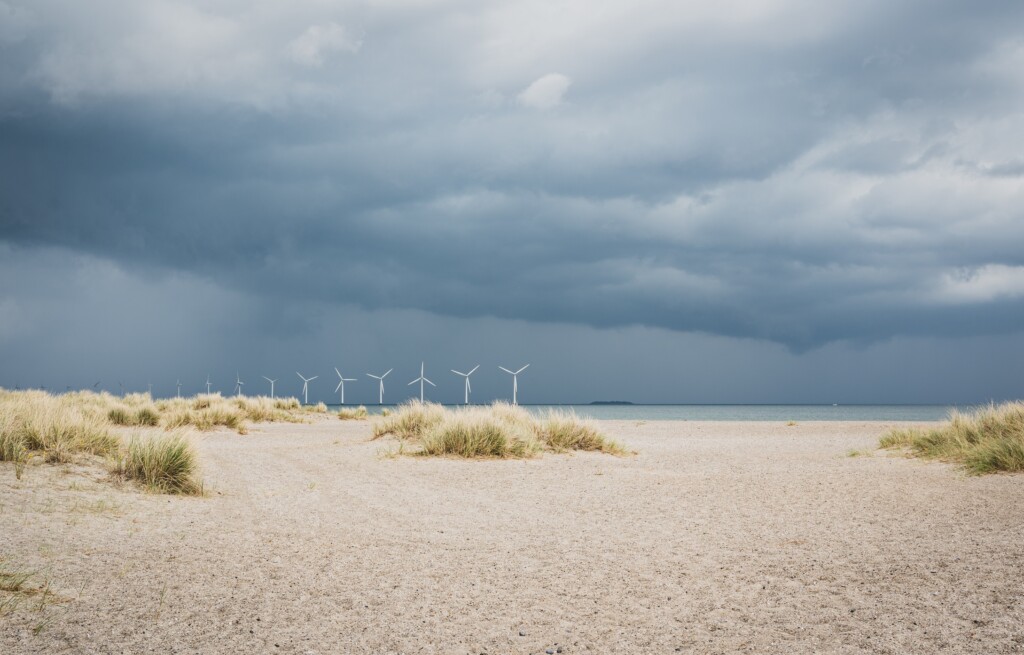
Green energy initiatives are rapidly transforming the way we think about and use energy. Not only do they represent a practical solution to the global energy crisis, but they also offer an environmentally friendly alternative to traditional fossil fuels. However, adopting these initiatives on a large scale requires a radical change in how societies operate, and this is where reasonable assurance comes into play.
Reasonable assurance in green energy seeks to instill confidence in the viability and benefits of eco-friendly initiatives. It’s a layered approach, blending policy support, technological prowess, financial viability, and transparent practices. Policies should foster a conducive environment for green energy, while technology must efficiently harness renewable resources, maintaining the reliability the public is accustomed to.
Financial structures should underline the economic benefits of transitioning to green energy, painting it as both an environmentally and financially sound choice. Transparent practices, finally, are paramount in building public trust and a collective commitment to green initiatives, embodying a comprehensive dialogue that propels green energy from a mere concept to a mainstream reality.
Together, these elements build the framework of reasonable assurance for sustaining green energy initiatives. But why is it so vital, and how does it propel the transition towards a more sustainable future?

Sure, here is the text content for the section: “Understanding the Concept of Reasonable Assurance”.
Reasonable Assurance, a pivotal concept to grasp in the realm of green energy, pivots around the confidence degree stakeholders can harbor regarding the accomplishment of sustainable energy targets while strictly adhering to the outlined policies, regulations, and standards.
In discussing reasonable assurance within green energy realms, three core elements are central. Objective assessment is the first, evaluating an organization’s capability to meet its green energy targets, hinging on practicality and reasonableness. Following this is compliance and governance, which encapsulates the adherence to laws, regulations, and standards guiding green energy efforts, showcasing a foundational commitment to these norms. The final element is reporting and transparency, emphasizing the necessity to document and communicate operations within green energy initiatives accurately and promptly. Together, these elements forge a structured approach towards achieving reasonable assurance in green energy endeavors.
With the world transitioning towards a sustainable future, reasonable assurance helps foster trust and reliability among all stakeholders in our green energy initiatives. It assures that sustainable energy commitments are tangible and will be met in a compliant, transparent manner.
Trust is fundamentally the cornerstone of every successful enterprise. And in the sphere of sustainable energy initiatives, it becomes practically indispensable. It enables a seamless partnership among all stakeholders and drives forward the mission for a greener future, given the high stakes involved and the long-term nature of the commitments.
In this setting, reasonable assurance emerges as a vital tool to establish this trust. It’s not merely a promise or a plan, it is a framework of trust and confidence. Let us understand how reasonable assurance helps build this trust.
Transparency: Through compliance with legal and regulatory standards, and through diligent reporting of all activities, reasonable assurance promotes transparency.
Reliability: With ensured compliance and regular audits, stakeholders can rely on the sustainable energy initiatives to deliver as promised.
Tangible Commitment: Practical, realistic plans, targets and deadlines indicate a tangible commitment to sustainability, rather than just theoretical aspirations.
Investor Confidence: In-depth reviews, audits and checks ensure that investors can have confidence in the sustainability goals and the methods used to achieve them.
Reasonable assurance fosters trust and reliability among all stakeholders in our green energy initiatives. It assures that sustainable energy commitments are tangible, reliable, compliant, and transparent.
| Significance | |
|---|---|
| Investors | Provides the security they need to invest in future-oriented, green projects. |
| Regulators | Ensures adherence to environmental regulations and policies, and promotes informed decision-making. |
| Public | Creates a positive, reliable image of the company and the green initiatives they are supporting. |
| Stakeholders | Builds confidence in the ability of the organization to deliver on their green energy goals. |
In conclusion, reasonable assurance is crucial in building and sustaining trust among all players in green energy initiatives. It paves the path to a sustainable future by fostering confidence, ensuring transparency, and driving the commitment to meet our green energy goals.

Policy frameworks play a pivotal role in providing reasonable assurance to stakeholders within the green energy sector. They establish a structured environment where green initiatives can flourish while ensuring viability and sustainability.
One way policy frameworks provide reasonable assurance is by setting clear guidelines and standards for green energy operations. This clarity helps in alleviating uncertainties that might otherwise deter investments or the adoption of green technologies. Additionally, these frameworks can facilitate financial incentives such as tax breaks or subsidies, further enhancing the economic attractiveness and viability of green energy initiatives.
A well-drafted policy framework also fosters innovation and competition by creating a level playing field. This, in turn, accelerates the development and deployment of green technologies, providing stakeholders with the assurance that the sector is advancing and is ripe for investment.
Globally, several regions have successfully implemented policy frameworks that have propelled the green energy sector. For instance, the European Union’s Green Deal aims to make Europe the first climate-neutral continent by 2050. This ambitious framework has generated a significant amount of investment in green energy projects across the continent.
Similarly, China’s 13th Five-Year Plan (2016-2020) had a strong emphasis on increasing the share of non-fossil fuels in primary energy consumption to around 15% by 2020. This policy framework not only provided a roadmap but also instilled confidence among stakeholders regarding China’s commitment to green energy.
In conclusion, robust policy frameworks are indispensable for providing reasonable assurance to stakeholders in the green energy realm. They set the stage for clear regulations, financial incentives, and competitive innovation, which are crucial for fostering a thriving green energy sector. Through examples from different parts of the globe, it’s evident that well-structured policy frameworks significantly contribute to propelling green energy initiatives forward.
Technological advancements are crucial in providing reasonable assurance in the green energy sector, signaling to stakeholders that renewable resources are not only viable but also reliable and efficient. These advancements help in addressing some of the common concerns associated with green energy, such as intermittency and storage, thereby building trust and encouraging further investments.
One significant advancement is the development of smart grids, which are instrumental in managing electricity demand and supply effectively. Unlike traditional grids, smart grids can automatically adjust to changes in electricity demand and reroute power during outages, enhancing the overall reliability and efficiency of the energy system. Additionally, they can seamlessly integrate renewable energy sources, thereby facilitating the transition towards green energy.
Energy storage solutions, such as advanced batteries and pumped-storage hydroelectricity, have also come a long way in providing reasonable assurance. These technologies address one of the main challenges associated with renewable energy sources – intermittency. By storing excess energy generated during periods of high renewable output and supplying it during periods of low output, energy storage solutions ensure a steady and reliable power supply. For instance, lithium-ion batteries with higher energy density and longer lifecycles are becoming increasingly prevalent in both grid-scale and residential energy storage applications.
Furthermore, monitoring systems play a critical role in ensuring the performance and reliability of green energy technologies. These systems provide real-time data and analytics on the operation of renewable energy installations, enabling prompt detection and rectification of issues. For instance, sophisticated monitoring systems in wind turbines can predict maintenance needs and optimize performance, thereby reducing downtime and ensuring a reliable energy supply.
Technological advancements also foster transparency, another facet of reasonable assurance. With the aid of data analytics from monitoring systems, stakeholders have a clearer insight into the performance and impact of green energy initiatives. This transparency, in turn, builds trust and fosters a more favorable environment for green energy investments and adoption.
In conclusion, technological advancements like smart grids, energy storage solutions, and monitoring systems are pivotal in offering reasonable assurance in the green energy domain. By addressing key challenges and promoting transparency, these technologies significantly contribute to building confidence among stakeholders, making a compelling case for the transition towards a greener and more sustainable energy landscape.

Financial mechanisms are crucial pillars in building reasonable assurance within the green energy sector. They provide the necessary monetary support and economic viability that can propel green energy initiatives from conceptual stages to full-scale operations.
Green bonds are among the financial instruments that have garnered attention in recent times. They are designated for financing environmental projects, including green energy initiatives. By investing in a green bond, investors are provided with a transparent pathway where their capital is being deployed towards environmentally beneficial projects. This transparency can instill a level of assurance among investors regarding the positive impact of their investments.
Grants, often provided by governmental bodies or international organizations, are another mechanism that can foster reasonable assurance. They offer a non-repayable fund to green energy projects, reducing financial risks and encouraging more projects to take shape. Additionally, grants can also act as a seal of approval, signaling the project’s viability and positive impact to other potential investors and stakeholders.
A robust financial structure is essential for the longevity and success of green energy initiatives. By creating a framework where financial resources are accessible, risks are managed, and returns on investments are reasonably assured, a conducive environment is crafted for green energy projects to thrive.
For instance, a structured financial system can include mechanisms like tax incentives for green energy investments, risk mitigation instruments like insurance or guarantees against certain types of risks, and establishment of green banks dedicated to financing green projects. Such a financial ecosystem not only provides the necessary capital but also creates a favorable investment climate, which in turn can attract more financing from various sources including private investors.
Furthermore, a well-designed financial structure can facilitate the channeling of funds from both domestic and international sources, thus ensuring a steady flow of investment for the continual growth and sustainability of green energy initiatives.
In summary, financial mechanisms like green bonds and grants, along with a robust financial structure, are indispensable in providing reasonable assurance. They encapsulate the economic viability and support that are essential for fostering and sustaining green energy initiatives, paving the way towards a greener, more sustainable energy future.

Imagine a world where green energy initiatives are not just ideas, but the mainstream practice. For these initiatives to find acceptance, we need something to showcase their quality, safety, and performance. This is where standards and certifications come into the picture. Acting as guiding lights, they set stringent criteria for these initiatives to show their commitment to specific environmental and technical goals. When this happens, everyone, including investors and community members, can trust these projects.
Benchmarking Quality and Performance: How do we know a green energy project is ticking all the right boxes? Standards provide that gauge, offering a yardstick against which we can measure these endeavors. Thanks to these, projects can demonstrate their reliability and effectiveness, giving all stakeholders a reason to trust them.
International Standards: We live in a connected world, and green energy is a global mission. This is why international standards, like those formulated by the International Electrotechnical Commission (IEC) or the International Organization for Standardization (ISO), are pivotal. By harmonizing technical specifications for green technologies worldwide, we ensure everyone is speaking the same language of safety, performance, and interoperability. Wind turbine systems and photovoltaic (PV) systems are prime examples of this with widely accepted IEC standards.
National Standards: Standards, on a national level, are vital for aligning green energy initiatives with the unique environmental and regulatory needs of each country. These standards fuel policy-making, helping governments to set precise and attainable sustainability targets.
Certification Process: Getting a green energy project or technology certified tells the world it has met the established standards. Done by accredited bodies, this certification process dishes out a seal of approval that convinces investors, regulators, and consumers of the project’s credibility and competence.
Driving Innovation and Competitiveness: Standards and certifications set the ball rolling for innovation while fostering competitiveness. They raise the bar high, pushing entities to outdo themselves to meet or surpass these set standards.
Promoting Transparency and Accountability: Transparency and accountability are two cornerstones of trust. The frameworks provided by standards and certifications advocate for regular auditing and reporting, paving the way for maintaining stakeholder trust and compliance with evolving standards.
Facilitating International Trade and Cooperation: International trade and cooperation get a significant boost with the standardization and certification of green energy initiatives. They create a common ground of understanding and expectations, fostering a global unity in pushing for a greener future.

Let’s realize that standards and certifications play a role of paramount importance in giving reasonable assurance for green energy initiatives. Quality, performance, and transparency are indispensable – these make the difference between dreams of a greener future and a living, breathing green reality. Together, let’s accentuate this push for a globally harmonious and sustainable green energy future.
Monitoring, Verification, and Reporting (MVR) are essential elements in building reasonable assurance within the green energy sector. These processes help in systematically tracking and communicating the performance and impacts of green energy initiatives to stakeholders and the broader community.
Continuous monitoring is crucial for assessing the real-time performance and environmental impact of green energy projects. It aids in identifying any discrepancies between projected and actual outcomes, enabling timely interventions to rectify issues and ensure that the projects stay on track towards achieving their objectives.
Verification provides a second layer of assurance by having independent entities assess the accuracy and completeness of data collected through monitoring. This unbiased verification substantiates the claims made by green energy projects regarding their performance and impact, lending credibility to these claims.
Transparent reporting is the cornerstone of building trust and support among stakeholders. By openly sharing data and insights derived from monitoring and verification activities, green energy projects demonstrate accountability and commitment to truthfulness.
The robustness of the MVR process significantly contributes to building stakeholder confidence. When stakeholders have access to accurate and verified information regarding the performance and impacts of green energy initiatives, their trust in these initiatives and their willingness to support them materially increase.
MVR processes help in ensuring compliance with regulatory requirements and industry standards. They provide a framework for benchmarking the performance of green energy projects against established criteria or similar projects, fostering a culture of continuous improvement and excellence.
For investors, a robust MVR process acts as a testament to the project’s transparency, accountability, and potential for success. It provides them with the information necessary to make informed decisions, thereby attracting more investments to green energy initiatives.
By communicating the verified achievements and challenges of green energy projects through transparent reporting, a level of public awareness and support is cultivated. This awareness is crucial for garnering broader societal backing for the transition to green energy.
Through meticulous monitoring, unbiased verification, and transparent reporting, a conducive environment is nurtured wherein trust, investments, and support for green energy initiatives can flourish, propelling the sector towards a sustainable future.
The narrative of reasonable assurance in propelling green energy initiatives unfolds through real-world examples. In Denmark, the transition to wind energy reflects a meticulous application of reasonable assurance principles. The government laid down a solid policy framework early on, setting ambitious targets for wind energy adoption. Financial incentives in the form of subsidies and grants became a cornerstone, providing the needed assurance for developers and investors. The journey wasn’t without hurdles, yet with a clear policy directive and financial backing, the sector thrived, showcasing how structured assurance mechanisms can significantly impact green energy adoption.

Across the Atlantic, in Chattanooga, Tennessee, the story of smart grid implementation unfolds. With substantial federal funding, the city embarked on a mission to revamp its energy infrastructure. The smart grid project, spearheaded by the Electric Power Board (EPB), became a testament to how technological advancement coupled with financial support could provide reasonable assurance in green energy initiatives. The project not only improved energy efficiency but also facilitated the integration of renewable sources, bringing to light the importance of technological innovation under a well-funded framework.
In contrast, the initial narrative of solar energy adoption in Australia revealed the other side of the coin. The early stages saw fluctuating policies and a lack of robust financial support, casting a shadow of uncertainty that deterred potential investors. However, as the narrative progressed, the stabilization of policies and the introduction of financial incentives gradually shifted the trajectory. The solar energy sector began to flourish, underscoring the pivotal role of stable policy frameworks and financial mechanisms in providing reasonable assurance.

These narratives collectively underline that a conducive environment, established through objective assessments, adherence to governance structures, and transparent reporting, significantly influences the success of green energy initiatives. Each story, with its unique set of challenges and triumphs, provides a learning curve for other regions and initiatives aiming to foster a green energy transition under the umbrella of reasonable assurance.
Reasonable assurance is fundamental in propelling green energy initiatives into mainstream acceptance and practice. A multi-faceted approach that intertwines robust policy frameworks, technological advancements, financial backing, and transparent practices lays a strong foundation for these initiatives. It not only nurtures trust among stakeholders but also drives innovation and investments, essential for building a sustainable green energy future. Through well-articulated policies, supported by reliable technology and sound financial mechanisms, bolstered by transparent practices, a conducive environment for the flourishing of green energy initiatives is cultivated, pushing them closer to mainstream adoption and practice.
Stay a while and read more posts like this
Let’s devote a few minutes to envision our world in 2100. It’s quite a thought experiment, given the dramatic transformations our planet has experienced in...
With climate change looming large, the world is embarking on a quest for solutions to heal our ailing planet. Solar geoengineering emerges as a burgeoning field,...
Taking on parenthood comes with unique choices that factor in more than just our family’s immediate needs. For modern parents, who are not just guardians of...